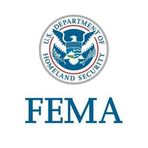Navigating Financial Recovery After Natural Disasters
January 22, 2025, 3:58 pm

Location: United Kingdom, England, Norwich
Employees: 501-1000
Founded date: 2009
Total raised: $133M
Natural disasters strike like lightning. They leave chaos in their wake. Homes are lost. Lives are disrupted. Finances can crumble. But recovery is possible. Understanding the right steps can make all the difference.
When disaster hits, the first instinct is often panic. But in the eye of the storm, clarity is key. Start by assessing your situation. Are you safe? Is your family okay? Once those questions are answered, it’s time to tackle the financial aftermath.
The Federal Emergency Management Agency (FEMA) is your first stop. They offer a lifeline. From unemployment assistance to rental aid, their resources are vast. Registering is simple. You can do it online, through their app, or by calling. The sooner you act, the better your chances of receiving help.
Next, turn to your insurance. Contact your insurer immediately. They will be inundated with claims, so early action is crucial. Review your policies. Know what’s covered. Flood damage? Often excluded. If you have flood insurance, check that policy too. Document everything. Take photos and videos of the damage. This will be your evidence when filing a claim.
Don’t forget about your mortgage. If you’re worried about payments, reach out to your mortgage servicer. Communication is vital. They may offer forbearance options. This can prevent foreclosure and give you breathing room. Explain your situation. They might provide temporary relief.
Student loans add another layer of complexity. If you’re a student or recent graduate, don’t change your address in your loan accounts. You need to remain in a FEMA disaster zone to qualify for certain relief options. If you miss a payment, your servicer may automatically place your loans in forbearance. This pauses your payments for up to 90 days. But be cautious. Interest will continue to accrue during this time.
If you can afford to pay, consider doing so. Avoiding forbearance can save you money in the long run. However, if you’re struggling, it’s a valuable option. Remember, months spent in forbearance count toward Public Service Loan Forgiveness if you’re working for a qualifying employer.
For private student loans, the situation varies. Each lender has different policies. Contact them directly. Ask about disaster relief options. Some may offer temporary forbearance. But be wary of interest capitalization. This can inflate your debt significantly.
As you navigate these waters, don’t forget about your credit. Cash is king in emergencies. If you need to use credit cards, be mindful of high-interest rates. Some issuers are now offering easier ways to access credit lines. This can help manage immediate expenses.
Rebuilding after a disaster is not just about physical structures. It’s about mental resilience too. Seek support from nonprofit organizations. Programs like Project Porchlight offer guidance and counseling. They help you manage the emotional toll of recovery.
When the dust settles, it’s time to strategize. Apply for as much aid as possible. Preserve your cash. This will give you more flexibility as you rebuild. Consider using credit wisely. Some card issuers allow you to convert your credit line into an installment loan. This can lower your interest rate and make payments more manageable.
As you regain your footing, focus on paying down debt. The debt snowball method can be effective. Start with the smallest debts first. This builds momentum and motivation. Keep detailed records of all communications with creditors and insurers. This will help you stay organized and informed.
If your financial situation feels overwhelming, explore debt relief options. There are resources available to help you navigate these challenges. Nonprofits and financial advisors can provide valuable insights.
Finally, stay vigilant against scams. In times of crisis, fraudsters often prey on the vulnerable. Always verify the legitimacy of organizations offering assistance.
In conclusion, recovery from a natural disaster is a journey. It requires patience, resilience, and a strategic approach. By taking proactive steps, you can rebuild your financial life. Remember, you are not alone. Resources are available. Help is out there. Take it one step at a time, and you will emerge stronger.
When disaster hits, the first instinct is often panic. But in the eye of the storm, clarity is key. Start by assessing your situation. Are you safe? Is your family okay? Once those questions are answered, it’s time to tackle the financial aftermath.
The Federal Emergency Management Agency (FEMA) is your first stop. They offer a lifeline. From unemployment assistance to rental aid, their resources are vast. Registering is simple. You can do it online, through their app, or by calling. The sooner you act, the better your chances of receiving help.
Next, turn to your insurance. Contact your insurer immediately. They will be inundated with claims, so early action is crucial. Review your policies. Know what’s covered. Flood damage? Often excluded. If you have flood insurance, check that policy too. Document everything. Take photos and videos of the damage. This will be your evidence when filing a claim.
Don’t forget about your mortgage. If you’re worried about payments, reach out to your mortgage servicer. Communication is vital. They may offer forbearance options. This can prevent foreclosure and give you breathing room. Explain your situation. They might provide temporary relief.
Student loans add another layer of complexity. If you’re a student or recent graduate, don’t change your address in your loan accounts. You need to remain in a FEMA disaster zone to qualify for certain relief options. If you miss a payment, your servicer may automatically place your loans in forbearance. This pauses your payments for up to 90 days. But be cautious. Interest will continue to accrue during this time.
If you can afford to pay, consider doing so. Avoiding forbearance can save you money in the long run. However, if you’re struggling, it’s a valuable option. Remember, months spent in forbearance count toward Public Service Loan Forgiveness if you’re working for a qualifying employer.
For private student loans, the situation varies. Each lender has different policies. Contact them directly. Ask about disaster relief options. Some may offer temporary forbearance. But be wary of interest capitalization. This can inflate your debt significantly.
As you navigate these waters, don’t forget about your credit. Cash is king in emergencies. If you need to use credit cards, be mindful of high-interest rates. Some issuers are now offering easier ways to access credit lines. This can help manage immediate expenses.
Rebuilding after a disaster is not just about physical structures. It’s about mental resilience too. Seek support from nonprofit organizations. Programs like Project Porchlight offer guidance and counseling. They help you manage the emotional toll of recovery.
When the dust settles, it’s time to strategize. Apply for as much aid as possible. Preserve your cash. This will give you more flexibility as you rebuild. Consider using credit wisely. Some card issuers allow you to convert your credit line into an installment loan. This can lower your interest rate and make payments more manageable.
As you regain your footing, focus on paying down debt. The debt snowball method can be effective. Start with the smallest debts first. This builds momentum and motivation. Keep detailed records of all communications with creditors and insurers. This will help you stay organized and informed.
If your financial situation feels overwhelming, explore debt relief options. There are resources available to help you navigate these challenges. Nonprofits and financial advisors can provide valuable insights.
Finally, stay vigilant against scams. In times of crisis, fraudsters often prey on the vulnerable. Always verify the legitimacy of organizations offering assistance.
In conclusion, recovery from a natural disaster is a journey. It requires patience, resilience, and a strategic approach. By taking proactive steps, you can rebuild your financial life. Remember, you are not alone. Resources are available. Help is out there. Take it one step at a time, and you will emerge stronger.
